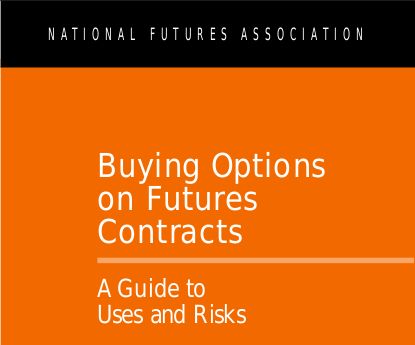Use the navigation panel to the right to jump ahead to a particular section. If you have any questions after reading this commodities trading educational material, or about anything included in here, don't hesitate to call us at (800) 454-9572 U.S. or (310) 859-9572 International.
"Buying Options on Futures Contracts" is a 27-page futures trading report put out by the National Futures Association as a guide to the uses and risks of options trading as it is used in commodities trading.
Futures options are a relatively recent choice as an investment opportunity, after their success in a pilot program in 1982 they have grown to widespread use on agricultural and financial futures trading. Options on futures options allow for a wide range of investment opportunities, but are still a speculative investment and thus investors should be aware of the risk of loss involved.
Some of the most common contracts investors trade options on are listed below, though this list is by no means complete.
This futures options trading booklet produced by the NFA does a good job of introducing futures traders to options trading, starting off with the vocabulary of the market and the special meaning it may have when used in the context of options trading. In Part two it then introduces the arithmetic of options premiums, describing the factors that affect price movements as well as the relationship between options prices and futures prices. The third section then goes over the mechanics of buying and writing options, describing the basic steps and risks involved. Finally, the final section includes additional factors to take into consideration before getting involved in trading options on futures.
The table of contents is reproduced below in order to give you an idea of what the future options report contains:

This link will open the futures options report as a PDF: National Futures Association: Buying Options on Futures Contracts
Trading commodity futures and options involves substantial risk of loss. The recommendations contained are of opinion only and do not guarantee any profits. These are risky markets and only risk capital should be used. Past performances are not necessarily indicative of future results. This is not a solicitation of any order to buy or sell, but a current futures market view. Any statement of facts herein contained are derived from sources believed to be reliable, but are not guaranteed as to accuracy, nor they purport to be complete. No responsibility is assumed with respect to any such statement or with respect to any expression of opinion herein contained. Readers are urged to exercise their own judgment in trading!